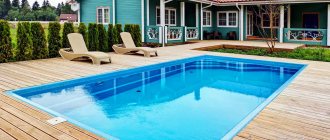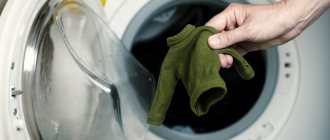Increased levels of humidity in the walls are a very unfavorable phenomenon that can damage your home. Generally, horizontal insulation of foundations or walls is incorrect. Moisture in the home is also unfavorable due to its impact on the health of residents.
A damp wall and warm air create ideal conditions for the development of dangerous fungi and mold. This is why it is so important to dry out buildings with too high humidity levels.
Innovative method of injection waterproofing technology
In the industry of waterproofing protection of all types of structures, one of the most promising and newest technologies is the injection method of isolating structures from the effects and penetration of water. This technology greatly reduces, even stops, the process of capillary suction. The injection method is well suited even for buildings built from porous materials. But, we note that such a protection measure is quite expensive and requires its implementation by professionals, since it requires not only special professional equipment, but also skills.
The essence of injection waterproofing is to create a double-action complex: an external moisture-proof polymer membrane and behind it an impervious curtain. The advantage of the insulation method under consideration is that there is no need to open the foundation from the outside and remove the lining inside the room.
Polymer resins and acrylate gels are used as waterproofing substances in the form of foam. The insulator is inserted through expansion packers, which are mounted into drilled holes with a diameter of 1.2 cm to 4 cm. Holes for the packers are drilled across the entire surface of the room at intervals of 20-80 cm. The insulators are inserted into the packers using a special construction pump under pressure.
Polymer waterproofing agents are environmentally friendly, have a low level of viscosity, due to which the substance has the ability to penetrate into any cavities, the slightest cracks, seams of foundations and walls.
Causes of problems
- insufficient ventilation of the room;
- defects associated with the construction of the house - improperly laid floors and clogging of ventilation with debris. As a result, a temperature difference occurs and condensation forms;
- the presence of groundwater lying nearby;
- The groundwater situation worsens in the off-season. To minimize problems associated with basement flooding and increased dampness, it is necessary to consider reliable drainage - a system that absorbs water before it enters the room;
- the presence of cracks and holes in the foundation that allow moisture to enter.
This problem is also associated with deviations from construction technology. Over time, damaged foundation walls may begin to collapse.
High humidity in the house: harm
The optimal humidity setting is considered to be from 40 to 60%. The measurement is carried out using a hygrometer.
Increased humidity in the house, harm:
- If this indicator is much higher, the load on the organs of the respiratory system increases sharply, which can lead to serious diseases. But besides this, high humidity promotes the growth of mold and mildew.
- Mold appears on the walls, causing the destruction of the foundation as well as the walls. Over time, cracks may appear, which will lead to the rapid destruction of the house. Humidity must be dealt with, regardless of the reasons for its occurrence.
Causes of dampness
Before fixing the problem, you need to understand its causes. Otherwise, all the measures taken will be useless.
Causes of dampness:
- Poor quality blind area;
- High groundwater level;
- Poor ventilation.
If the blind area is of poor quality, then precipitation will begin to accumulate under the foundation of the house. Moisture will seep into the subfloor through small cracks. Penetration by capillary method is also possible
That is why it is important to do high-quality waterproofing in a timely manner.
The outer surface of the foundation can be treated with bitumen mastic. You can put roofing felt or any other roll waterproofing on top of it. At the joints, the material will also need to be treated with bitumen. You can add attractiveness with finishing.
Horizontal waterproofing is required between the foundation and the plinth.
In autumn and spring, the basement may flood due to high groundwater levels. The problem can be solved with the help of a high-quality drainage system. It is recommended to use its equipment when building a house.
If there is poor ventilation in the underground, then warm and humid air will penetrate there from other rooms. Then, in the form of steam, it will begin to settle on the walls and ceilings of the basement. Because of this, the tree will begin to collapse.
Is it possible to use dehumidification for frame houses after construction in winter?
Winter construction, of course, is less preferable than spring-summer construction, but sometimes you can’t do without it. The main disadvantage of construction in winter is not only low temperatures, but also the abundance of snow and freezing of unfinished structures. With the arrival of warmth, snow and ice begin to melt, moisture is absorbed into the materials of the ceiling, walls, and floor. Therefore, drying frame houses after winter construction is necessary and mandatory.
Even if visually it seems to you that everything is in order, “from the inside” the situation may be different. To avoid problems with dampness and unnecessary repair costs, call dehumidifiers immediately after construction is completed. Proper drying will save you from a number of problems, and you can immediately move into your new home.
How to warm up the cellar
Of course, the option with a candle is far from the only one. There are a huge number of ways to deal with excessive humidity. For example, warming up. Today in stores you can find all kinds of special heating devices. They allow you to both dry out the cellar and use them in everyday life for other purposes.
The most popular device is a heat gun. With its help you can warm up the walls of the cellar very well. To do this, you just need to point it in the right direction and leave it that way for a while. Despite the fact that this method is quite easy, not everyone uses it. And then the question arises again, how to dry the cellar outside.
Previously, a fire was simply lit for this procedure. But, of course, this is not the safest option. It was replaced by an easy-to-use device - a roaster. It won't be difficult to do it. It is enough to take a metal bucket, make legs for it or simply place bricks along the edges and punch small holes at the bottom. Afterwards, you need to load wood chips into this structure and ignite it. When the flame burns well, you can add large logs to the fire.
The brazier is placed in the cellar. The flame from it will not only dry out all the walls, but will also drive out the old, stagnant air, and the smoke will kill all the fungi and bacteria that lived there before. This procedure is more effective than a regular fire, and also much safer.
Humidity in the house, windows sweating: what to do?
Very often, indoor humidity increases due to the installation of plastic windows. Many residents of private houses try to save money by installing plastic windows with just one air chamber. This is not enough, especially during severe frosts.
Humidity in the house, windows sweat:
- When the temperature outside is sub-zero, the dew point is located indoors, namely in the area of double-glazed windows. Drops of condensation appear on the surface of the glass, which flow down, provoking the growth of mold in the area of the seal and in the slope area. To correct the situation, it is necessary to install new plastic windows with a large number of cameras inside. The best option is two or three chamber windows. The more layers of air there are in the glass unit, the less likely it is that condensation will form on the surface of the glass.
- The most problems occur in the kitchen and bathroom. In the kitchen, food is constantly being prepared; as a result of boiling liquid, water vapor evaporates, increasing the humidity in the room. The exact same situation occurs when taking a shower.
- In the kitchen, it is recommended to install not only a standard kitchen hood, which absorbs steam during the cooking process, but also an additional fan with forced ventilation. In the upper part of the kitchen, right under the ceiling, make a small hole, inside which a fan is installed. If the hood fails to remove vapors during cooking, the remainder will be absorbed by the fan. While cooking, you can open the windows for ventilation so that excess moisture goes outside.
Eliminating moisture in the underground
The problem needs to be resolved in a comprehensive manner. Only a versatile approach will help you get rid of moisture in the underground forever.
Ways to eliminate moisture in the underground:
Internal and external waterproofing of the foundation and plinth. It is better to concrete the floor. All indoor surfaces must be treated with waterproofing material. The joints are not easy to process. That is why the material is overlapped. And then the seams are treated with bitumen mastic. High-quality ventilation. Traditional ventilation for a large basement is usually not enough. Because of this, condensation may settle on the floors. To eliminate the problem, first dry the underground in a wooden house using special fans. Ventilation pipes can be replaced with larger diameter communications
It is important to position natural ventilation correctly. Arrangement of a drainage system. It is in its absence or poor quality that problems can arise.
It is better to entrust the work to a specialist. They will be able to correctly determine the level of groundwater, select high-quality materials and correctly lay pipes. Application of polyethylene. This is the simplest way, but not very effective. This option is suitable for a small underground. It is enough to simply lay a monolithic piece of film on the ground floor. As a result, the moisture will not be able to rise higher, it will settle as condensation on the film and go back into the ground.
If a problem occurs systematically, immediate action must be taken. First you need to dry the subfloor, and then you can begin measures to eliminate the problem. But it’s better when everything is arranged at the construction stage.
Is ventilation needed in a private house to get rid of dampness after winter?
Of course, ventilation plays a very important role in maintaining a normal indoor microclimate. But she precisely supports it, and does not create it. That is, if there is dampness in your home, ventilation will not be able to eliminate this problem. It only ensures normal air circulation, but does not draw out moisture.
Drying a house, relying on ventilation, is the same as drying it using ventilation; the efficiency is almost the same, that is, zero. However, after professional drying, ventilation will help maintain a normal microclimate.
First thing
Where can you start all the work? First of all, you need to take everything that is stored inside into fresh air:
- pallets;
- racks;
- bins;
- boxes;
- shelves.
All these storage tools must be cleaned and washed thoroughly with warm water with soap and soda. After which the structures must be completely dried and ventilated in fresh air.
For the purpose of disinfection, all wooden structures are treated with a solution of copper sulfate, and then whitened. If you don’t trust the old “old-fashioned” method, then you can purchase a special antifungal composition that will also do an excellent job with this difficult task.
After carrying out the procedures, you can begin treating the walls and floor of the cellar. First of all, they must be washed and treated with a solution of copper sulfate to prevent the formation of mold. Only after completing these steps can you begin to dry the cellar.
Expensive drying method
Many people believe that it is easier to pay money than to do the work themselves. They came up with a special way to dry the basement - using injections. This is the most complex and expensive method of all those presented above, which consists of introducing special waterproofing agents into the soil with a pump. These injections are made around the entire perimeter of the cellar and prevent moisture from penetrating into it.
The cellar is undoubtedly one of the most important rooms in the household. Its construction must be carefully thought out. But if, nevertheless, the cellar urgently needs to be dried, then in this case only improving the waterproofing and installing a newer ventilation system will help.
Any living space requires maintaining an optimal level of humidity
Particular attention must be paid to controlling the level of humidity in basements and garage cellars. To do this, they are equipped with good ventilation and waterproofing.
But what to do if water does appear in the cellar? In this case, garage owners need to immediately take measures to dry out the cellar. How to do this correctly, and what methods exist for drying cellars from moisture - read our article.
Effective methods of control
Before you start fighting moisture, you need to determine the reasons for its appearance. All further actions depend on this. The causes can be identified by the location of the moisture.
- If on the ceiling and walls, there are problems with ventilation.
- Available only on walls; vertical waterproofing of walls is required.
- If on the floor, groundwater has increased in volume.
External waterproofing
Check the quality of installation; there may be problems with slopes and drainpipes. Possible breakdowns of the drainage system.
If you don't have any waterproofing installed at all, consider designing it. Later, protect the outer walls from moisture:
- Remove the blind areas.
- Dig 0.5 m from the walls along the entire perimeter.
- Dry the outer walls.
- Lubricate the wall with antifungal mixtures.
- Lubricate the wall with mastic, clay or concrete (one or the other).
- Install blind areas. They are fixed 0.5 m above the ground
- Fill the hole.
The installed moisture insulation system will help remove dampness.
Internal waterproofing device
In addition to the external drainage system, it is necessary to make an internal one, with the help of which the required temperature in the cellar is maintained. Procedure:
- Dry the room.
- Put the walls in order, remove the old whitewash.
- Clean out the cracks.
- Use the antifungal mixture again.
- Cover the walls with waterproofing compound.
Protect your basement from moisture
Your damp basement will no longer be like that, waterproofing will not allow excess moisture to penetrate inside.
Ventilation system
An additional ventilation system will help remove moisture in the basement. It is installed when air exchange is disrupted. There are two types of such ventilation:
- Natural. It uses the so-called. “vents” are openings throughout the room. According to the established norm, their area should correlate with the area of the entire room as 1:400.
- Forced. It is more often used in large rooms. It involves the installation of special equipment. It allows fresh air into the room when necessary.
Forced installation costs a lot.
Preparation Protection and disinfection of the structure
The easiest way to disinfect a cellar
is whitewashing with lime. It is carried out with a solution of copper sulfate in a proportion of 100 grams per bucket.
To protect structures located in this room from mold and putrefactive fungus
A ten percent solution of copper or iron sulfate will be effective. With the same solution, before drying, you need to thoroughly rinse all the walls, and also treat the earthen floors.
In warm sunny weather, it is recommended to regularly ventilate the cellar. With the onset of warm days, it is recommended to lubricate walls that are not covered with wallpaper with a composition of laundry soap. Take 5 liters of water, dissolve 0.5 kg of laundry soap, bring the solution to a boil, and then apply it cold evenly to the wall.
To prevent dampness from destroying the entire crop, the cellar walls must be dried. During the rainy season in the cool autumn, hoping that the cellar will dry out on its own is very careless.
Installing waterproofing in a damp basement
In order for drying the basement in the garage to be effective, it is necessary to take care of the arrangement of external and internal insulation. You can create it yourself, without involving specialists. You can purchase materials for external and internal drainage at a hardware store.
The arrangement of external drainage (Diagram 3) in the cellar involves the creation of a system for removing excess moisture outside the room. It is best to equip the exterior during the construction stage of the garage, but you can waterproof the already finished room if the humidity level increases significantly. The principle of creating external waterproofing is as follows:
- A trench is dug along the outer perimeter of the building (it should be 50 cm lower than the floor level in the cellar);
- Along the entire length of the dug trench, drainage is installed in the form of plastic pipes (for them, wells with a depth of up to the first layer of sand must be prepared in advance). The upper part of the drains must be covered with a metal mesh (this will prevent contamination of the entire system);
- Geotextile waterproofing material is laid at the bottom of the trench (it should also extend onto the walls);
- The finished drainage channel is filled with crushed stone to a height of 40 cm. The layer of crushed stone should be greater than the floor line in the cellar;
- The embankment is well compacted.
Scheme 3
Internal drainage (Scheme 4) will dry the cellar much faster. To equip it, you need the following materials: geotextile waterproofing, crushed stone and gravel, drainage pipes, drainage pump, PVC container, sand. Pipes are laid around the perimeter of the room to collect excess water. The diameter of these pipes may vary, but it is best to choose designs with a diameter of 110 mm. It is better to arrange the internal drainage system in the basement of the garage during the construction stage. Otherwise, you will have to dismantle the floor in order to lay all the structural elements of the system.
Internal drainage in a garage cellar is laid in accordance with the following scheme:
- Dig a trench about 50 cm deep around the entire perimeter of the room;
- The bottom is compacted well, then a geoseptic is laid on it (this material perfectly absorbs moisture, thereby performing the function of waterproofing);
- A layer of fine-grained material (gravel, crushed stone) 20 cm thick is placed in the trench;
- Pipes are laid on top of the embankment, maintaining an inclination angle of 3 mm;
- A layer of gravel is again poured over the laid pipes, but of a medium fraction. The material is well compacted and a layer of geotextile is placed on it;
- The final action in this case will be backfilling the trench with sand and soil (removed during digging) and thoroughly compacting it.
Scheme 4
There is another method for effectively drying a cellar in the basement - injection protection (Scheme 5). This method is one of the most expensive, but at the same time it is most effective. When using this method, waterproofing in the cellar is installed using injections. Naturally, to perform such work you will need specialized equipment. The injection drying method is recommended for garages built from concrete, brick and foam blocks. The injection drying technology looks like this:
- Holes with a diameter of 1.5 to 4 mm are drilled along the entire perimeter of the damp basement. A distance of 20-80 cm must be maintained between adjacent holes. In each case, the parameter will be different and depend on the level of humidity, wall thickness and soil characteristics;
- Special elements are inserted into the prepared holes, through which liquid waterproofing or polymers are introduced with a pump;
- The advantages of such waterproofing are obvious. There is no need to dismantle wall cladding or break building structures. In addition, work on arranging waterproofing in this way can be carried out in any weather, at any time of the year.
How long does aerated concrete dry, features of the material
Autoclaved aerated concrete is produced in autoclaves, which are huge steam boilers with temperatures over 150 degrees and high pressure (about 12 atmospheres).
During this treatment, aerated concrete quickly gains strength, but is also saturated with moisture. That is, fresh aerated concrete absorbs about 40% of its mass of water. Low-density aerated concrete (D300, D400) absorbs more moisture, denser aerated concrete is correspondingly less moisturized.
In other words, aerated concrete is brought to the construction site very wet, and its wet density is higher than stated. For example, fresh aerated concrete of density D400 can weigh not 400 kg, but 550 kg. So keep this in mind.
But what to do with this excess moisture? Just keep laying blocks, the aerated concrete wall will gradually dry out. The main amount of moisture leaves the aerated concrete in the first 2-6 months, then the drying process continues, but at a slower pace, until the humidity reaches 4-6%.
The rate of moisture removal from the thickness of aerated concrete depends on the following factors:
- Density of aerated concrete.
- Wall thickness.
- Wind speed.
- Ambient temperature.
- Amount of precipitation.
- Finish type.
On average, aerated concrete dries completely:
- 200 mm thick in 2 years.
- 300 mm in 2.5 years.
- 400 mm – 3 years.
It is worth noting that these indicators are valid only if the aerated concrete is not finished with dense plaster, since it has low vapor permeability, which slows down the evaporation of moisture from the thickness of the wall.
Let's draw conclusions about the drying of aerated concrete:
- Drying speed depends on many factors.
- The equilibrium moisture content of aerated concrete is 5-6%.
- When aerated concrete is dry, it retains heat better.
- It is better to build walls from aerated concrete in the spring.
- Leave the walls for six months without external decoration so that the aerated concrete has time to dry.
- Use plaster with high vapor permeability.
On this topic, it will be useful to learn about the following: dew point in the wall, condensation and moisture accumulation of aerated concrete. You will learn about all this in the video from Gleb Green.
Traditional methods of drying a cellar
After disinfection and treatment of all surfaces of the cellar, you can safely open ventilation hatches and pipes. The air in this room becomes heavy over time, so you can’t rely on natural ventilation under the influence of draft.
The most popular folk methods of drying a cellar, which you can try yourself:
- Using an iron stove;
- Drying using a roasting pan;
- Using candles (to increase natural cravings).
Using an iron stove
Drying the cellar/basement with an iron stove is a rather labor-intensive method, but effective. If the household has a suitable stove, then simply heat it in the cellar.
Drying the cellar with a brazier
The most preferred option for quickly drying the cellar is to use a roasting pan. The process is carried out a few days after natural drying. A Dutch oven is very easy to make yourself. You can use, for example, an old bucket.
The bucket is placed in the center of the room and the fire is constantly maintained in it until the cellar is completely dry.
Small wood chips are used to light the brazier.
When the flame flares up and gets stronger, you can put larger firewood in the bucket. The heat quickly displaces damp and stagnant air from the cellar.
Using a candle
An ordinary candle in one single copy will also help to increase air draft in the cellar. However, this drying method requires extending the ventilation pipe installed in the basement almost to the floor (see the figure on the right). After this, a lit candle is placed under the inlet of the pipe. It can be placed in a regular canned food jar.
To create an initial impulse directly in the pipe, it is recommended to light a sheet of paper. This will quickly create the necessary draft in the pipe, which will subsequently be supported by the candle flame. You can completely dry the cellar in this way within three days. Constantly replace spark plugs.
When the cellar is completely dry, you can bring all the removed shelves and racks into it. These items must be checked for dirt and fungi. If lesions are noticed, a solution of copper sulfate will help get rid of them.
You can dry the cellar in the garage, or located directly under the house, in no time. To do this, use the heat of the fire and a variety of simple devices. In order for vegetables and seams to be stored in the cellar all winter, it must be dried in advance.
A damp cellar is the most common problem in country houses. The reasons for the appearance of excess dampness in such a room are very prosaic and lie in the poor quality of its waterproofing. Also, in the absence of air exchange (ventilation), due to the storage of a large volume of fruits and vegetables in a limited area, excess moisture may form, which will subsequently condense on all enclosing structures.
Of course, storing vegetables and fruits in such a cellar is extremely unjustified, because being in constant moisture, the products will quickly become unusable and spoil in less than a month. Based on this, our review today will examine the question of how to dry the cellar and perform this procedure most effectively.
Drying the room
To dry the air in the room and no longer encounter this problem, first of all, you need to eliminate the cause of dampness, and only then deal with the consequences. In many ways, the choice of method for drying a room depends on the reasons, and today there are several of them.
So, in order to dry the room, you can use one of the following methods:
- heater
heats the air, creates forced circulation in the room, displacing dampness and mustiness. This option is especially effective when the humidity in the room does not exceed 60%, and depending on the degree of dampness, the drying time will vary: from several days to several weeks; - The fan heater
dries the air according to the same principle as any heater.
A separate type of fan heaters are heat guns
- powerful devices that can warm up, and therefore dry, large areas in a record short time. As a rule, they are used at production and construction sites, in greenhouses, but they are very suitable for quickly drying the air in a room. Of all the variety, electric heat guns are most suitable for residential premises: a heating element is installed in their body, passing through which the air is heated and supplied into the room by a fan. The power of such units is very high, so the effect can be felt literally immediately; - A dehumidifier
is one of the most effective options that removes moisture not only from the air, but also from all pieces of furniture. Such devices quickly cope with their task, even if there is a flood in the room. But to do this, it is important to close all doors to limit air circulation and choose a dehumidifier with an air exchange rate several times greater than the volume of the room. The air passing through the apparatus is deprived of moisture, which accumulates in a special container or immediately goes down the drain. Condensation dehumidifiers only work when the room temperature is more than 15 degrees, while adsorption dehumidifiers are also effective at lower temperatures: both types are suitable for residential conditions. The device first extracts moisture from the air, which is then quickly saturated with moisture from the furniture, and everything is repeated again until everything in the room is completely dried; - Another option is to use silica gel
, a substance that actively absorbs moisture. It is used in double-glazed windows, in equipment, in recuperators, and in dehumidifiers as a powerful adsorbent, and in the room it can simply be laid out in bags around the perimeter of the room. Silica gel granules can be used in combination with other methods of drying a room; - but if the humidity of the area is high, then air saturated with water vapor will constantly enter the room, and there is no escape from this. In this case, it is recommended to equip supply and exhaust ventilation recuperator
. This is a device that is designed to save heat in the apartment in the summer and coolness in the winter. For example, the exhaust air comes out dry and warm, but comes in cold and humid from the street, nullifying all efforts to dry the room. In this case, the recuperator will not only save heat, because heat exchanges between incoming and outgoing air flows, but will also lead to an improvement in the microclimate as a whole.
How to dry a cellar: tips from homeowners
A damp cellar is the most common problem in country houses. The reasons for the appearance of excess dampness in such a room are very prosaic and lie in the poor quality of its waterproofing. Also, in the absence of air exchange (ventilation), due to the storage of a large volume of fruits and vegetables in a limited area, excess moisture may form, which will subsequently condense on all enclosing structures.
Of course, storing vegetables and fruits in such a cellar is extremely unjustified, because being in constant moisture, the products will quickly become unusable and spoil in less than a month. Based on this, our review today will examine the question of how to dry the cellar and perform this procedure most effectively.
How to make ventilation?
Scheme of natural ventilation of the basement: 1 – supply pipe; 2 – exhaust pipe.
Ventilation helps to significantly reduce humidity and dampness in a basement or cellar.
- To ensure good ventilation, it is necessary to install two galvanized pipes with a diameter of 100 mm. The air will enter the cellar through the supply pipe, and the exhaust air, along with excess moisture, will be discharged outside.
- Instead of pipes, you can make air ducts from boards in the form of a box. The boards should be treated with a waterproofing compound.
- The end of the supply air duct should be 20 cm from the cellar floor, the pipe goes through the ceiling to the surface. Cover the entrance hole with a fine mesh, this will prevent insects and rodents from entering the cellar. Place the pipe in one of its corners.
- In the other, located diagonally, install an exhaust pipe. Its beginning will be under the ceiling of the cellar. Having passed through the ceiling, the pipe should rise above the ground at a height of 50 cm.
- The flow of circulating air is regulated by insulated dampers (such as stove dampers), which are installed on the pipes.
- When the air temperature outside is low, limit its inflow and outflow by regulating the optimal humidity and temperature.
- The part of the exhaust pipe located outside must be insulated.
This will reduce the accumulation of condensate inside the pipes and protect it from ice that can accumulate on it in winter.
Methods for drying a cellar in a garage
The constant accumulation of moisture in the cellar negatively affects the condition of the entire structure. There are several methods you can use to dry out the cellar in your garage. The most effective of these are candles and a brazier (metal oven, photo 1).
Important! Before you start drying out the cellar, you need to carry out a good inspection of it, remove the shelves, take out the interfering equipment and supplies upstairs. When all the garbage has been removed from it, the room is dried with outside air to remove excess moisture, and then a method is chosen to normalize the humidity level
There are two most well-known ways to deal with excess moisture in a garage basement.
Attention! If there is a lot of water in the basement, then before drying it must be pumped out with a pump or scooped out manually
It is important to determine what is the source of water in the cellar. Poor insulation may be to blame
But it may also be that the room was built next to a spring. In this case, you need to divert the water to the side using a pump and equip the cellar with good waterproofing
Poor insulation may be to blame. But it may also be that the room was built next to a spring. In this case, you need to divert the water to the side using a pump and provide good waterproofing in the cellar.
I am building a house from aerated concrete at sub-zero temperatures. Sharing tips
Beginning of October 2022 It was raining and there were slight frosts at night. And 06.10.2020 there was this picture:
If you sweep away the snow from the masonry, you can continue working. But if there is a temperature below zero, won’t this affect the strength of the mineral glue? I asked the manufacturer a question. It turned out that everyone has winter glue in their line. For Sibit it looks like this:
The inscription on the bag is “winter” and minor changes in the design of the picture. They can work in conditions where the temperature is not lower than -10 degrees. It differs from the summer one by the addition of anti-frost additives.
I was told examples where builders used summer glue in their work in winter. And the next day the block could be moved - the glue froze and did not set.
I purchased winter glue in advance and used it before the onset of night frosts.
What I noticed while working with him. Because glue at temperatures around zero loses moisture very little, and aerated concrete is wet after snow (does not draw water out of the glue), then literally the next day the glue in the smudges became strong (and, therefore, in the masonry). Summer glue gains strength over several days in the heat. His smudges still crumbled after a day if you pressed on them.
Important note: when laying, you need to remove not only snow, but also ice from the blocks. Ideally, there would be no ice at all. Quality teams use a gas torch before laying the row in such cases. In my case, the snow melted during the day, there was no ice on the blocks.
Backfilling the underground room
Excess space in the underground can be filled with special material. But first you need to make the right choice. Backfilling can negatively affect ventilation, so other methods of thermal insulation are also offered.
Most often, the subfloor is covered with expanded clay. This is baked clay. The material is light in weight, so it is easy to work with.
Rules for filling the subfloor with expanded clay:
- It is necessary to maintain an interval between the floor and the material of 20-50 mm;
- The material should not interfere with ventilation;
- Expanded clay should be as dry as possible so that the boards do not begin to rot.
Many people are interested in how to fill the underground floor in a wooden house so that the protection is as effective as possible. The basement can be filled with a mixture of wood chips. Mineral wool is often used. Protection using polystyrene foam is very effective.











